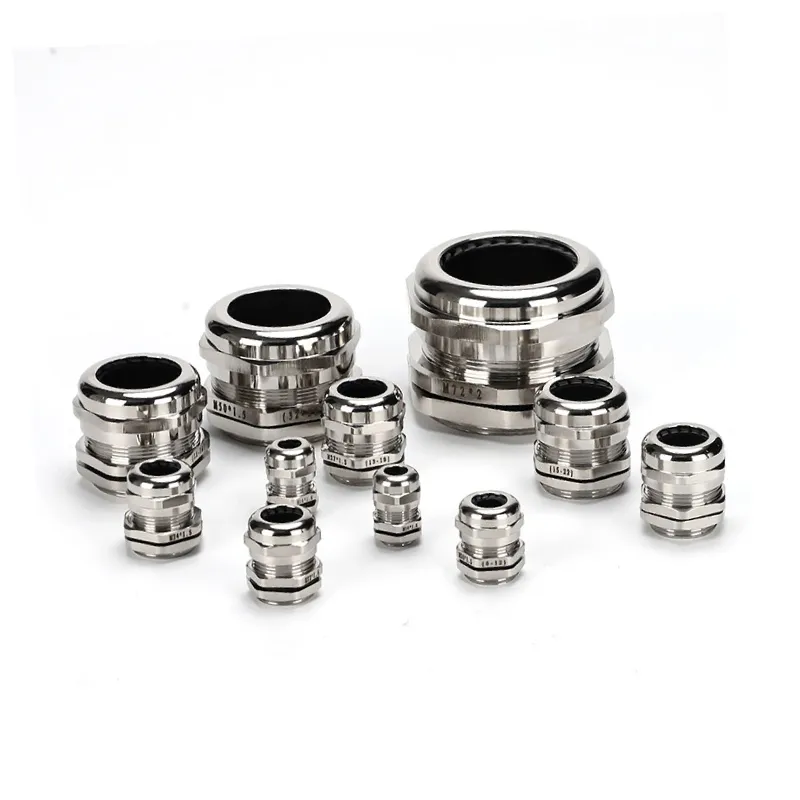Виробництво металевих кабельних вводів являє собою складну взаємодію металургійного досвіду, точного машинобудування та суворого контролю якості. Ці важливі компоненти, призначені для захисту електричних з'єднань у різних галузях, від аерокосмічної до офшорної енергетики, проходять ретельно організований виробничий шлях. У цьому звіті узагальнено інформацію з промислової практики, технічних специфікацій та матеріалознавства, щоб окреслити складний технологічний ланцюжок, що лежить в основі виробництва кабельних вводів.

Проектування фундаменту та вибір матеріалів
Інтеграція обчислювального дизайну
Виробничий процес починається з передового комп'ютерного моделювання, де програмне забезпечення 3D CAD генерує точні специфікації з урахуванням механічних навантажень, коефіцієнтів теплового розширення та профілів електромагнітних завад. Інженери інтегрують аналіз методом скінченних елементів (FEA) для моделювання розподілу напружень між компонентами в умовах експлуатації, оптимізуючи геометрію для досягнення міцності на розрив понад 500 МПа у варіантах з нержавіючої сталі.
Вибір матеріалу
Вибір матеріалу відіграє вирішальну роль:
- Латунні сплави (CuZn39Pb3): Використовується для загальних застосувань завдяки високій оброблюваності, корозійній стійкості та збільшеному терміну служби завдяки нікелевому покриттю.
- Аустенітна нержавіюча сталь (AISI 303/316L): Переважно використовується в морських і хімічних середовищах, забезпечуючи чудову стійкість до точечної корозії.
- Алюмінієві сплави (6061-T6): Ідеально підходить для аерокосмічної та автомобільної промисловості завдяки оптимальному співвідношенню міцності до ваги.
Технічні характеристики відповідають таким стандартам, як BS EN 62444 щодо зусилля утримання кабелю та протоколам захисту від проникнення IP68, підтвердженим за допомогою моделей обчислювальної гідродинаміки (CFD).
Технології точного виробництва
Металургійна обробка
Процес починається з лиття або кування:
- Інвестиційне лиття: Підтримує складну геометрію з допусками на розміри ±0,15 мм і включає термообробку після лиття для забезпечення стабільності конструкції.
- Гаряче кування: Підвищує опір втомі на 40% у порівнянні з обробкою за допомогою вирівнювання потоку зерна.
Механічна обробка з ЧПК
Багатокоординатна обробка з ЧПК забезпечує точність, в тому числі:
- Поворот: Різьба оброблена з шорсткістю поверхні Ra ≤1,6 мкм і підтримується відповідно до точних специфікацій ISO 68-1.
- Фрезерування: Дозволяє створювати контури для антивібраційних фланців і пов'язаних з ними компонентів.
- Свердління/нарізання: Зберігає перпендикулярність з точністю до 0,02 мм/мм при прокладанні кабелів і формує внутрішню різьбу.
Після обробки абразивна обробка потоком (AFM) видаляє мікрозадирки, забезпечуючи цілісність ущільнення за стандартом IP68.
Інтеграція системи збирання та ущільнення
Протоколи багатоетапної збірки
Інтеграція компонентів відбувається за чіткими протоколами:
- Встановлення ущільнення: Фторосиліконові ущільнювальні кільця пресуються з міжфазним тиском >3,5 МПа.
- Затискач для броні: Латунні наконечники холодного кування забезпечують опір висмикуванню понад 1,5 кН.
- Обмежувач крутного моменту: Пневматичні приводи застосовують контрольований крутний момент (12-35 Нм), уникаючи при цьому надмірного стиснення.
Удосконалені механізми подвійного ущільнення забезпечують швидкість витоку гелію < 1×10-⁶ мбар-Л/с під час випробувань.
Забезпечення якості та перевірка ефективності
Метрологічна перевірка
Критичні розміри перевіряються за допомогою КВМ з лазерними скануючими головками. Ретельно перевіряється концентричність різьби, відповідність калібру Go/No-Go та інші дрібні допуски.
Екологічне стрес-тестування
Відбір зразків з партії проходить ретельне тестування, в тому числі:
- Термоциклинг: Від -40°C до +150°C протягом 250 циклів для контролю компресії ущільнювача.
- Випробування сольового розпилювача: Забезпечує пасивацію нержавіючої сталі відповідно до стандартів ASTM B117.
- Випробування на вібрацію: Підтверджує довговічність при випадкових профілях вібрації (MIL-STD-810G).
Електрохімічна імпедансна спектроскопія (ЕІС) запобігає схильності латунних компонентів до децинкування.
Інновації у сталому виробництві
Матеріальні системи із замкнутим циклом
Практики сталого розвитку включають в себе:
- Переробка латунної стружки для відновлення матеріалу до 98%.
- Використання нікелювання на водній основі для зменшення кількості небезпечних відходів.
Енергоефективні процеси
- Імпульсна гальваніка: Зменшує споживання енергії на 40%, забезпечуючи рівномірне нанесення покриттів.
- Регенеративні термічні окислювачі: Уловлювання та повторне використання тепла від ливарних операцій, зменшення викидів летких органічних сполук.
Висновок
Виробництво металевих кабельних вводів уособлює конвергенцію традиційної металургії та технологій Індустрії 4.0. Від комп'ютерного моделювання до ініціатив зі сталого виробництва - на кожному етапі акцент робиться на точність і турботу про навколишнє середовище. З розвитком промислових потреб виробники впроваджують інновації, використовуючи такі матеріали, як композити, леговані графеном, та методи адитивного виробництва, забезпечуючи постійну актуальність цих важливих компонентів у глобальній інфраструктурі електрифікації.


